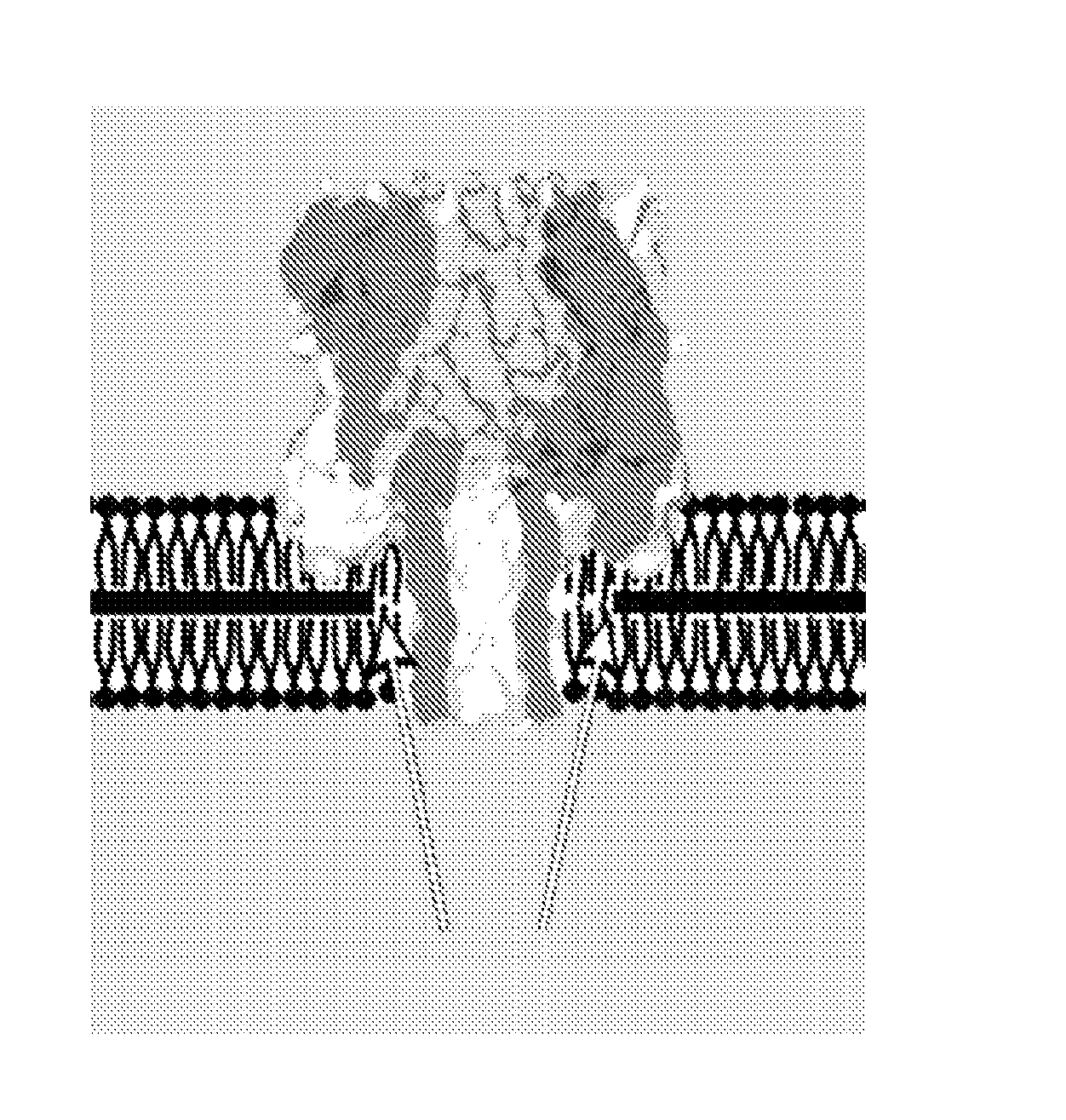Nanopore device with graphene supported artificial lipid membrane
a technology of artificial lipids and nanopores, which is applied in the direction of electrolysis, diaphragms, immobilised enzymes, etc., can solve the problems of affecting the integrity or rigidity of the bilayer, affecting the movement rate of the polymer, and affecting the delicate structure of the structur
- Summary
- Abstract
- Description
- Claims
- Application Information
AI Technical Summary
Benefits of technology
Problems solved by technology
Method used
Image
Examples
example
[0081]Liposomes can be triggered to form a lipid bilayer membrane that forms a high resistance giga-ohm seal across an aperture in a graphene membrane that separates two solution filled chambers (FIG. 5).
[0082]A 0.5×0.5 mm CVD grown sheet of graphene was mounted over a 200×200 nm aperture in a 250 nm thick, free-standing, insulating SiNx layer on a silicon substrate frame as shown in FIG. 2. The chip-mounted membrane was inserted in a fluidic cell such that it separated two compartments, each subsequently filled with ionic solutions (250 mM KCl, 2.5 mM TRIS, pH 7.8) in electrical contact with Ag / AgCl electrodes. The resistance of the aperture to ionic current flow was then measured by sweeping the voltage bias between the two chambers separated by the chip-mounted graphene from −100 mV to +100 mV. Before adding liposomes, the aperture resistance was 46 MΩ, which is the expected access resistance of an 8 nm aperture in graphene. Adding liposomes to the chamber on one side of the grap...
PUM
| Property | Measurement | Unit |
|---|---|---|
| diameter | aaaaa | aaaaa |
| size | aaaaa | aaaaa |
| size | aaaaa | aaaaa |
Abstract
Description
Claims
Application Information
 Login to View More
Login to View More - R&D
- Intellectual Property
- Life Sciences
- Materials
- Tech Scout
- Unparalleled Data Quality
- Higher Quality Content
- 60% Fewer Hallucinations
Browse by: Latest US Patents, China's latest patents, Technical Efficacy Thesaurus, Application Domain, Technology Topic, Popular Technical Reports.
© 2025 PatSnap. All rights reserved.Legal|Privacy policy|Modern Slavery Act Transparency Statement|Sitemap|About US| Contact US: help@patsnap.com



